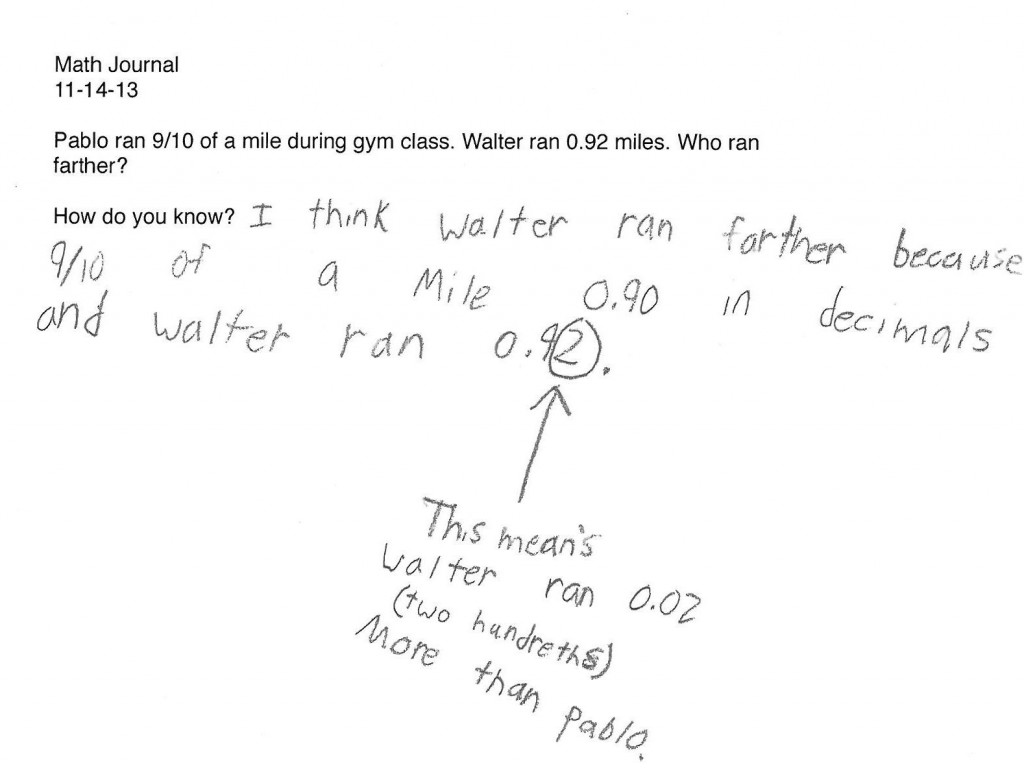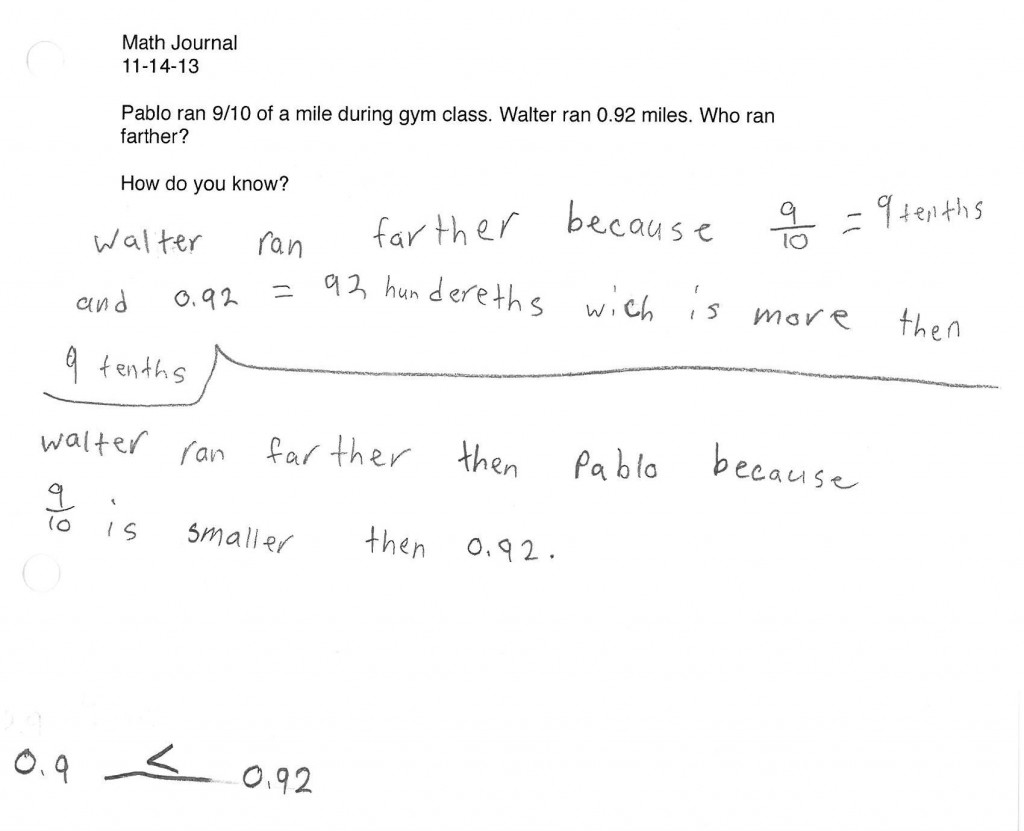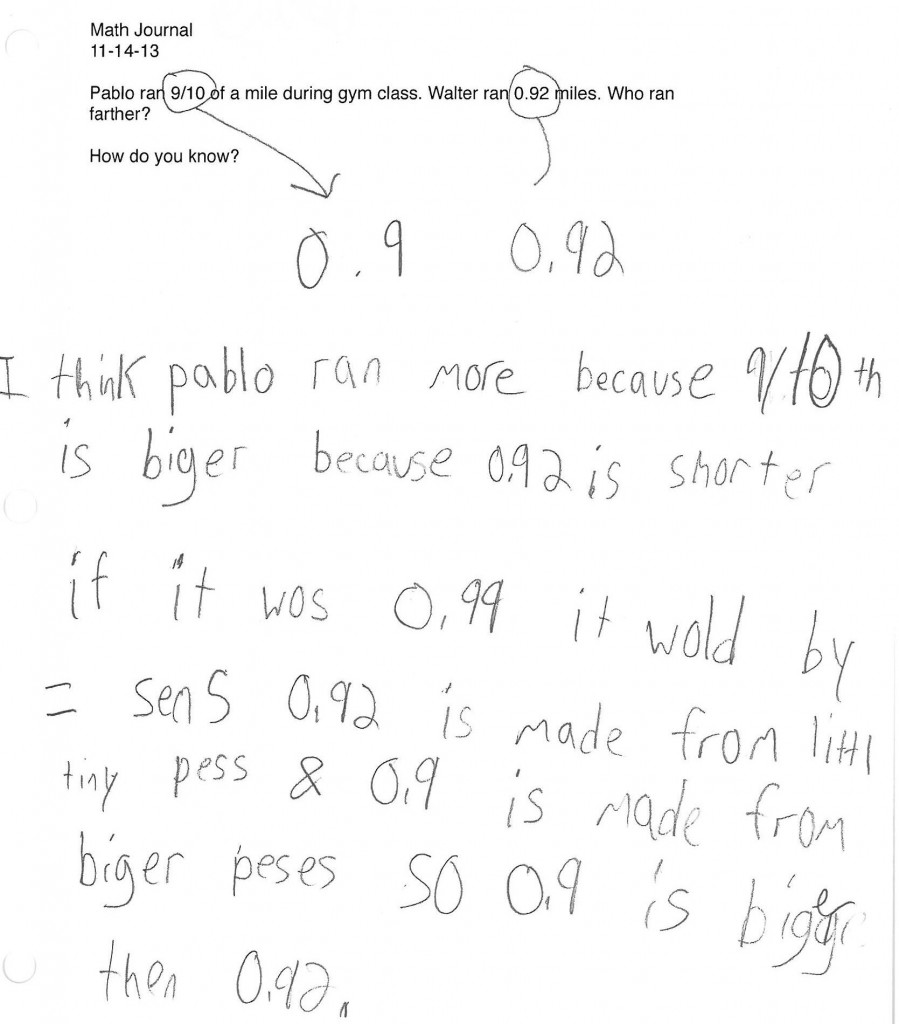In a recent post I talked about how difficult decimals are to learn. I asked the kids to explore the place value and fraction qualities of decimals by dividing a meter into 1/10, 1/100, and 1/1,000.
Well, I checked back to see how well those ideas were understood. I’m glad that I did because those conversations revealed an interesting way that a small number (5 of 21 in my class) had “encoded” the learning that we did that day.
Here’s the problem that I gave the kids: Pablo ran 9/10 of a mile in gym class. Walter ran 0.92 miles. Who ran farther. Explain your reasoning.
Most of the children identified Walter’s distance as longer, explaining that they were close, but that Walter ran 2/100 (0.02) of a mile farther. This showed some good grasp of the notion of place value in decimals. Here are a couple examples of that line of thinking.

A clear explanation of the difference between the two distances.

Another fairly clear explanation of the difference in distances. This one doesn’t identify the difference as clearly as the above example, but still shows good understanding of decimal place value.
However, several students appeared to have internalized the concept that the farther to the right from the decimal a numeral is, the smaller the piece was. So, for example, they had been impressed by the “smallness” of the 1/100 compared to the 1/10, the smallness of the 1/1,000 compared to all the other parts of a meter we looked at.
But, the students hadn’t deeply understood the idea of what that means in terms of place value, so they had formed a fuzzy understanding that any number that has numerals farther to the right must be smaller because the pieces are smaller.
In addition to this fuzzy thinking about relative piece size, their explanations contained a general sense that decimals were surprising, so the “normal rules” did not apply to the right of the decimal point. In fact, by listening to their explanations, decimals were almost mirror images of “normal numbers,” a term this group used often in conversation. In this world, numbers that appear large (like 1/1,000) actually represent very small pieces. It is only one small step to assume that all numbers that appear larger are actually smaller.
Here are some examples of that kind of thinking. Notice they overlook the central idea of place value and substitute the misconception that decimals don’t follow the normal rules, so large numbers are actually smaller than small numbers.

Notice the discussion of the size of pieces, without incorporating place value concepts.

Again, this explanation highlighted the idea of piece size, rather than place value concepts.
All of this shows that while getting answers right or wrong is important in math, understanding the origins of student misconceptions and the function they serve for the learner’s developing understanding is crucial for the teacher’s next steps.
What we did on Thursday and Friday was explore the concept of place value, drawing and modeling what 92/100 vs. 9/10 (90/100) looked like, while still maintaining the notion that 1/100 of anything results in smaller pieces than 1/10.

That’s what assessment should be all about — to inform instruction.
Just this week, Ohio used the results of a single 2.5 hour test last year to label every teacher. As you can imagine, there’s just about nothing in my label that describes what I do in the course of a school year.
That must feel terrible. High stakes labeling is bad for kids, bad for teachers. Strange (and scary) that the powers that be can convince themselves that these numbers can describe much of what happens in such a complex, nuanced and dynamic space as the classroom.
Keep your eyes on the prize. 🙂